If I say that you should definitely take the chance to listen to something ineffective that gets very hot and doesn’t deliver much power, you might think that I have totally lost it.
If, at the same time, I tell you it’s a valve amplifier, you’ll probably shake your head and smile with condescension. Because valve amps are old-fashioned and outdated technology, something ‘everyone’ knows.
Yet there are many who swear by radio valves. A technology that belongs to the last century, but is still used by many amplifier manufacturers – and hardly anyone else.
Of course, there are good reasons why McIntosh, Audio Research, Jadis, Ayon and many others build amplifiers with radio valves. First of all, the sound.
The Octave Audio V 70 SE upends the perception of tube amplifiers.
It’s the main reason you can pop into a modern hi-fi shop and listen to a valve amp. The sound.
It can vary widely from amp to amp. It all depends on the design, what tubes it uses, what the designer wants to achieve – and ultimately what speakers you use.
Some amps sound so soft and pleasant that it borders on the anaemic. Still others may have a tighter direction to the music and deliver a more open and focused sound, but none of them are boring to listen to. Of course, there are amplifiers that, regardless of the internals, have a slightly slacker bass and muted treble in favour of a more prominent midrange. A characteristic many associate with valve amplifiers in particular.
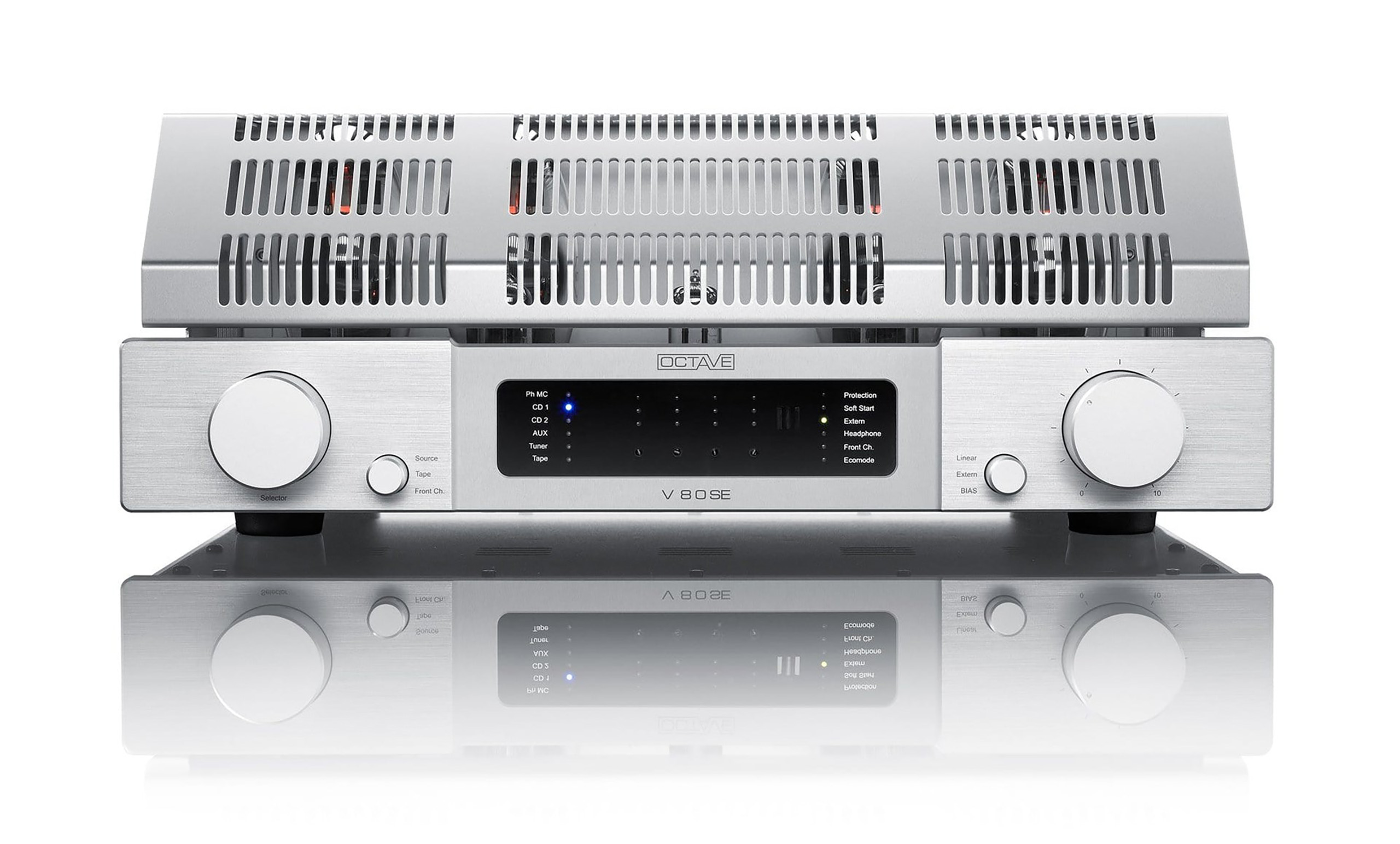
The Octave V 70 SE can’t be accused of that. When we reviewed it in 2022, it turned everything we thought we knew about tube amps on its head. It’s the opposite of anaemic and woolly. The bass is basement deep, there’s complete control even when playing loud, and the soundstage is focused, open and airy. It sounds more like a modern transistor amp, doesn’t it?
Obviously, not everyone buys a valve amp to have it sound almost like a transistor amp. The magical midrange response that a really good valve amp can have is exactly what many people are after when they choose valves. Maybe they want a little extra romantic warmth sprinkled over the soundstage.
In that case, the Octave V 70 SE is hardly the right choice, but Andreas Hofmann at German Octave has a solution for those who find the V 70 SE too tight and proper:
A V 70 Class A, which has lower power, gets much hotter, and is far less efficient than a V 70 SE, or a V 80 SE, which we first thought was a V 70 Class A because it sounded like one.
In a class of its own
The amplifier differs from a V 70 SE (and most other amplifiers) in that it runs the output stage in so-called Class A mode. The short answer is that constant current is sent to the transistor, or in this case the radio valve. That is, without the current being switched on and off. This results in lower distortion than in the more common Class AB principle, which turns the current off every half cycle of the signal.
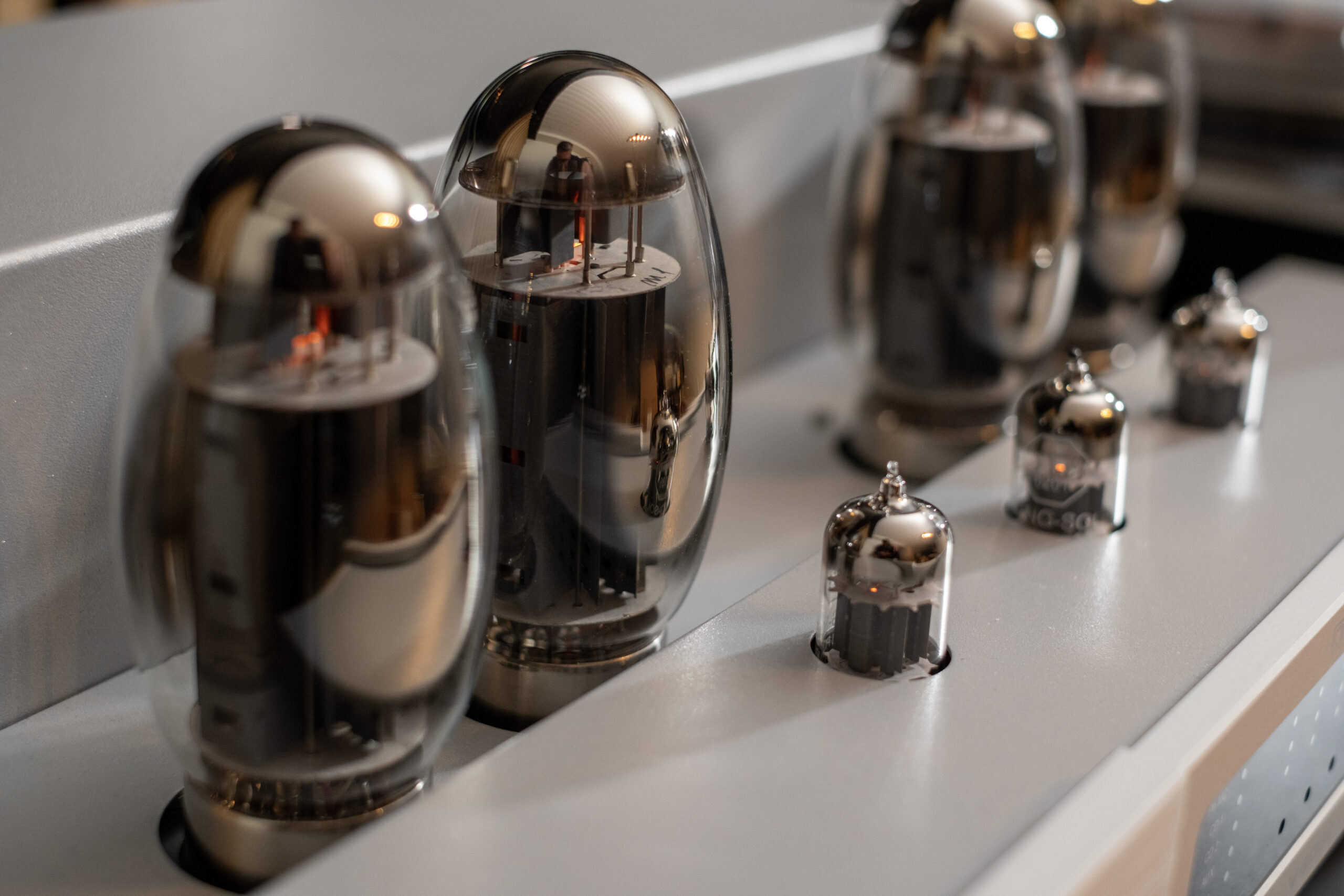
One of the drawbacks of Class A is lower power, but Octave has solved this with a push-pull configuration of two KT120 tubes per channel. This gives higher power and a more linear and stable signal with lower harmonic distortion.
In an Octave V 70 Class A, the stated power is 50 watts per channel into 4 ohms. That’s quite a lot for a Class A amplifier, even in a push-pull configuration.
The amp can deliver up to 70 watts per channel if coupled with the Octave Black Box, a separate box with extra capacitor capacity that provides more powerful power reserves.
In a V 80 SE like this one (see pictures), four KT150 tubes are used, providing a full 120 watts per channel and much better control.
The Black Box is available in two sizes, the Black Box with four times capacity for 1.170 Euro and the Super Black Box with 10 times capacity for 3.100 euros. When connected to a Black Box, the amplifier becomes both more stable on speakers with low and highly variable impedance, and it can deliver tighter control of the speakers.
As with most Octave amplifiers, you can replace one of the analogue inputs with a phono module with MM or MC input. This takes you from five to four line inputs in addition to the turntable input and an XLR input for audio sources with balanced outputs. There’s also a headphone output hidden between the cable terminals on the back, as well as an output for a subwoofer, for example.
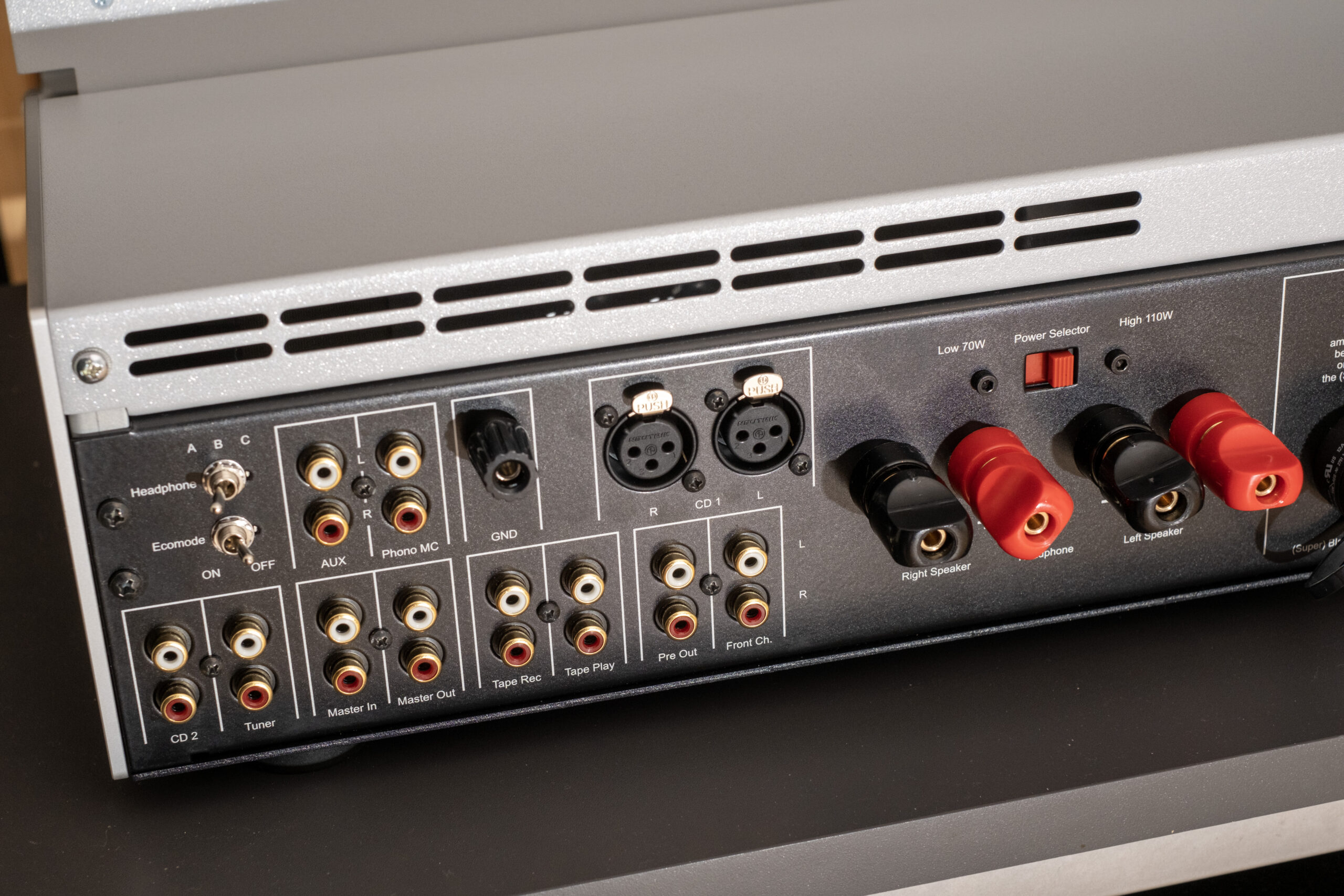
Dynamic bias
Radio valves use a system called bias to control the current through the valve. Although the amplifier usually sets the bias current itself, there may be amplifiers where the bias has to be set manually, or where it may need to be checked and possibly adjusted. The current is adjusted to the correct level once the valves have warmed up. Here it is done with a screwdriver through small holes in the front.
Bias is checked via the illuminated LEDs which are lined up – all should light green when everything is set correctly. If they don’t, turn the knob to the right of the display to Bias to access bias adjustment, and follow the instructions.
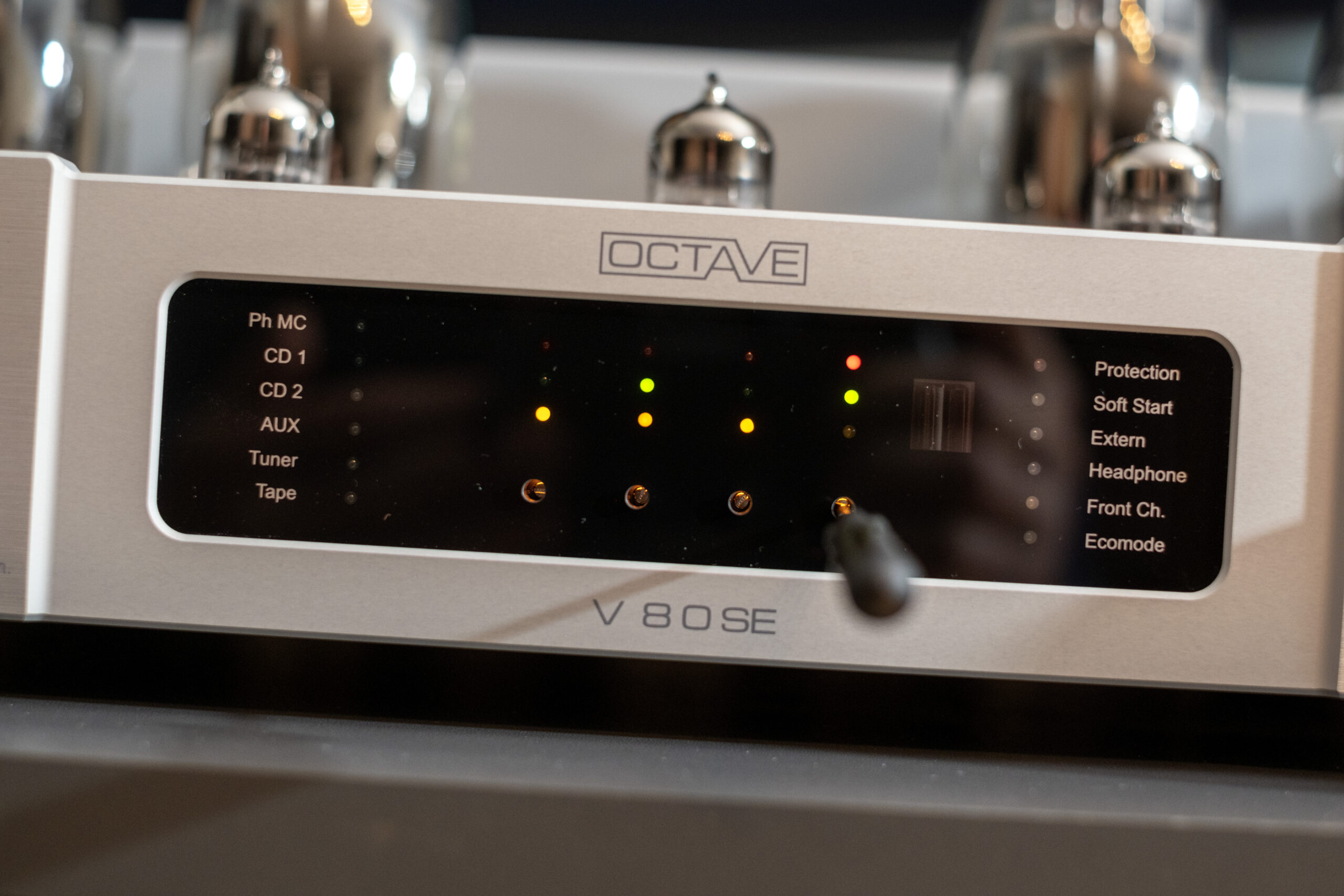
Ecomode
The amplifier is equipped with a power save button on the back. With Ecomode activated, the amplifier turns off the power if there is no signal after 10 minutes to conserve the valves. This way the amplifier uses a minimum of power, but as soon as it detects a signal, the valves are switched on and within seconds the amplifier is ready.
Silky sound with a glow
When I tested the V 70 SE, I was struck by how different it sounded to what I was used to from valve amps. The warm full sound I had expected from the amp was simply replaced by tight control with full control and a very neutral sound image. Boring, some might say, but to each his own.
I was therefore very curious to see if the V 70 Class A went in the same direction, but to my surprise it did so to a lesser extent.
It wasn’t long before I realised that this version of the V 70 is made for those who love valve amps and prefer the warm, rich sound with the silky smooth midrange that the best valve amps like to deliver.
But here the warm glow is combined with an exceptionally controlled soundstage; where the dynamics, especially in the bass, are more reminiscent of the SE version of the V 70. It’s noticeable that the Class A version is not as dynamic as the Class AB version, but I don’t find it anaemic in any way. Quite the contrary.
Instead, it has more of that organic, almost legato flow to the music that is so ear-friendly that all music sounds wonderfully natural coming out of the speakers. On the small Audiovector R1 Arreté, I didn’t expect such good control of the bass. You can easily pick up even the lowest octave of a concert piano, even on such a small speaker. The piano sound is heard more clearly in the room, and there is an unusual depth to the soundstage.
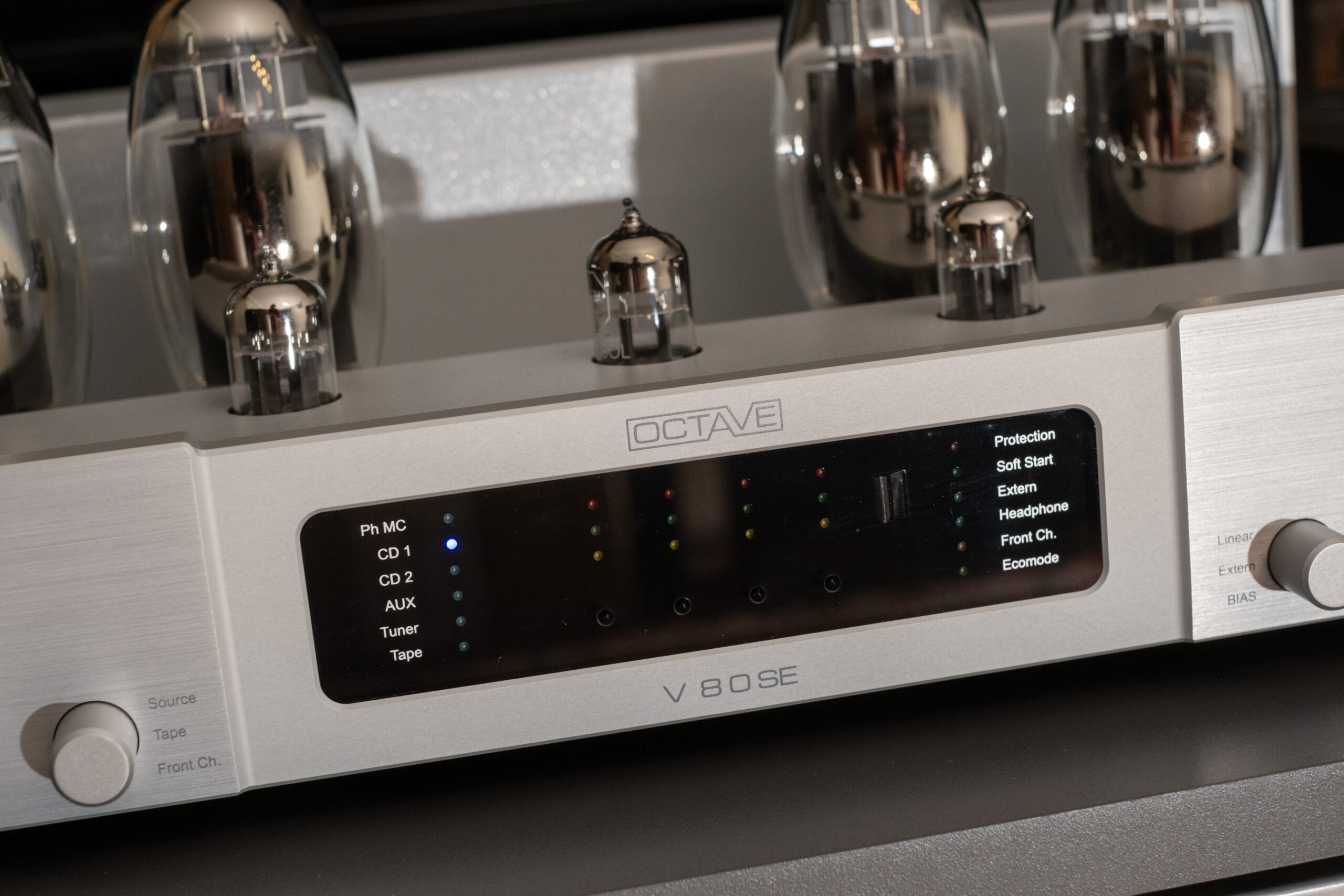
Where a V 70 SE renders cymbals with razor-sharp ease, the same tones resonate more here. Jack DeJohnette’s drums on ‘Butch & Butch’ from Keith Jarrett’s album Up For It sound warmer, and there’s more heaviness in the small bass drum on the recording. Gary Peacock’s double bass is a little further forward in the soundstage, and I can hear more space between the performers on the 2002 live recording.
Vocals are usually the most difficult exercise. Where some voices can lose their glow and depth on individual amplifiers, the notoriously difficult soprano voices emerge with a warm, silky glow, and even Kathleen Battle’s cool soprano as Adina in Donizetti’s ‘Love Elixir’ is given much-needed sonority. The vocals of her co-star, Luciano Pavarotti as Nemorino, can sometimes sound harsh and forced, but not here. With the Octave amplifier alongside a pair of Sonus faber Olympica, the 1989 recording is given new life, and the vocals the depth they deserve. Under the direction of James Levine, the chorus and orchestra of The Met are given great leeway here, and the added warmth of the soundscape doesn’t rob the music of any of its detail or timbre.
I often use Al Jarreau’s ‘Cold Duck’ as an example of a recording that can quickly sound sharp in the treble. Here the harshness is smoothed out, and here too I notice the vocals take on more of a glow. The same thing happens on Accentuate The Positive from the same album. The amp has total control over the dynamics and nothing sounds harsh or sharp, even when I play loud.
When I tested the V 70 SE I was lacking a little warmer piano sound and a little more fullness on the vocals, that wish is fully fulfilled on the V 80 SE. Which gives Keith Jarrett’s Steinway pianos the timbre and warmth I like, and the vowels more depth and glow. More musicality, you might say.
The Octave amplifier places itself in an exclusive class of really good integrated high-end amplifiers. The McIntosh MA9000 for example, which has three times as many inputs, DAC, turntable input and endless power. The super-resolved and highly flexible Ayre EX-8 costs about the same, but neither quite creates the same organic yet airy flow in music that characterises the Octave V 80 SE.
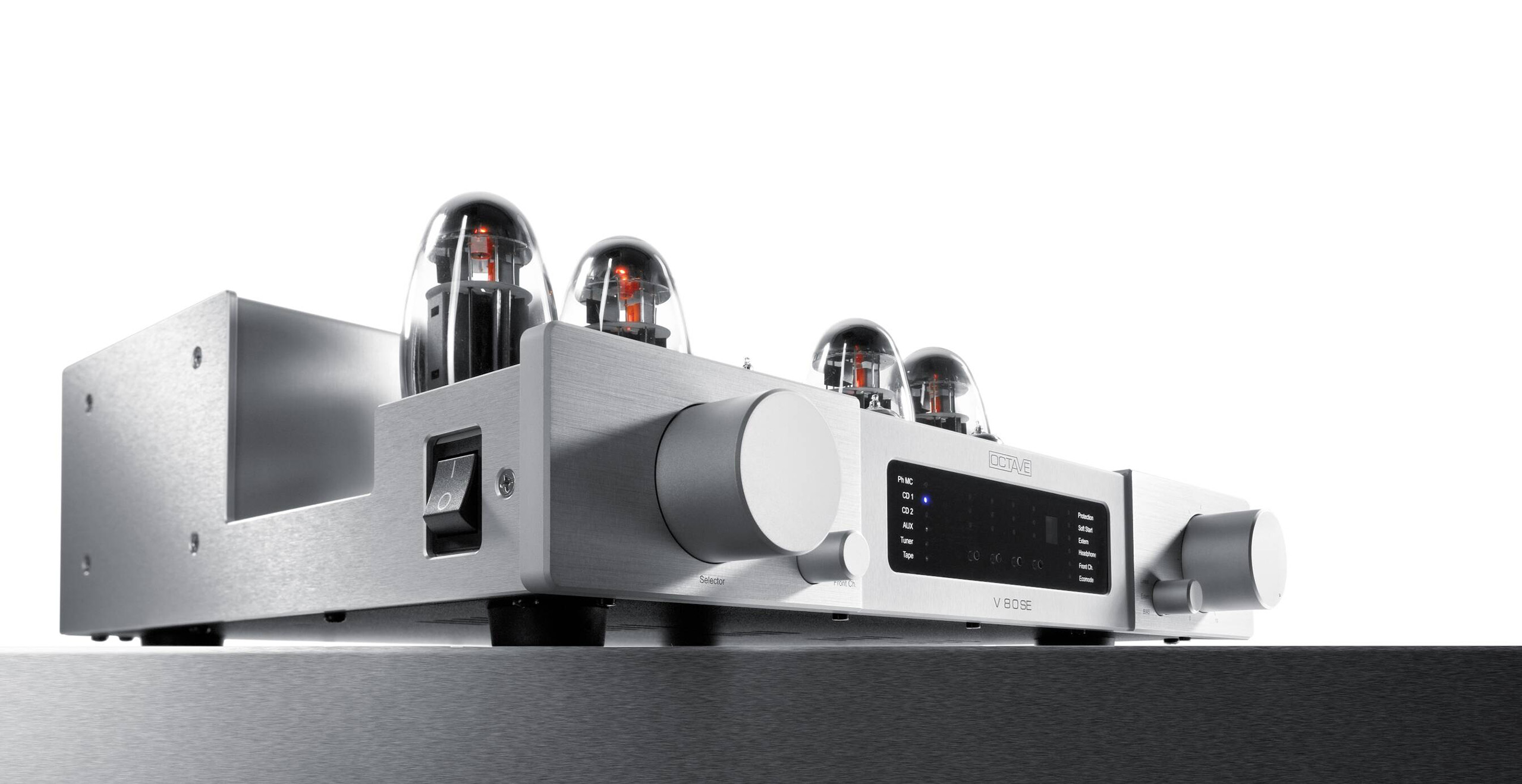
Conclusion
The integrated amplifier brings something extra to the music that not all amplifiers can handle. With an Octave V 80 SE, you don’t get the world’s most powerful or advanced amp with everything built in. Instead, you get a music reproduction instrument that is better than most at giving the music the natural glow and nerve that you can experience at an (acoustic) concert. The Octave V 80 SE is the amplifier for those who prefer their music to have more of the pleasant warm glow that many associate with valve amplifiers.

We think
Lovely nuanced sound with natural richness. Full control even in the bass. Infinite resolution. Upgradeable with MM/MC phono input and the current capacity can be upgraded. Limited power for heavy-duty speakers. Phono stage must be installed by dealer.
10120 €
Specifications
- Type: Integrated Amplifier
- Technology: Radio valves, 4 x KT150
- Connections: 5 x analog, XLR
- Turntable input: MM el. MC, optional
- Headphone output: Yes
- DAC: No
- Power: 2 x 120 W into 4 ohms
- Frequency range: 10 Hz – 80 kHz
- Dynamics: Not specified
- THD: 0.1% 10 W into 4 ohms
- Signal-to-noise: >100 dB
- Dimensions and weight: 45 x 17,5 x 40,5 mm / 23 kg
- Web: octave.de/en
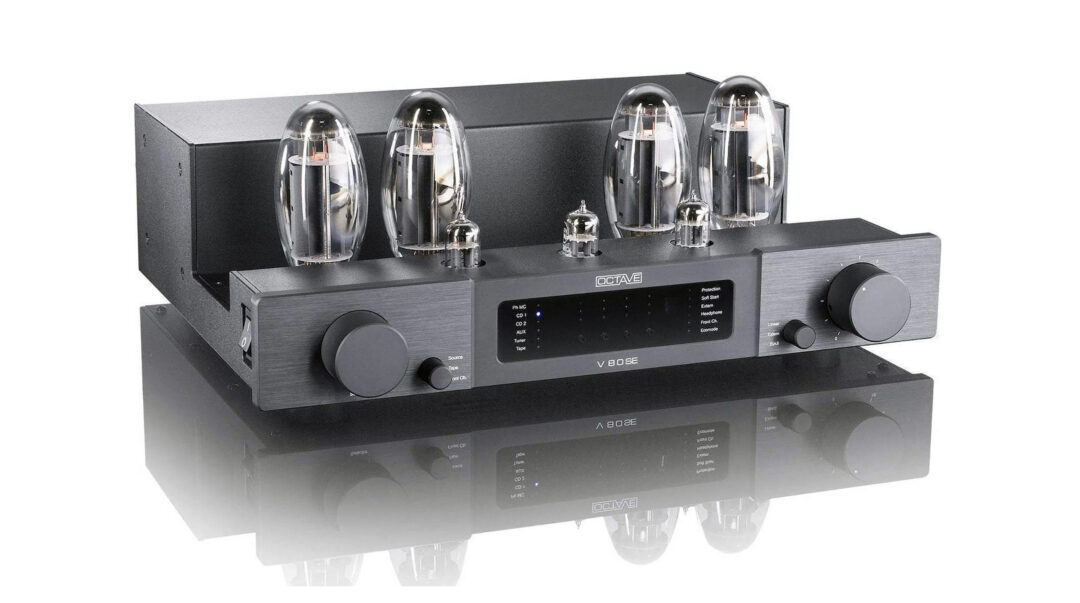

I woon one ☺️